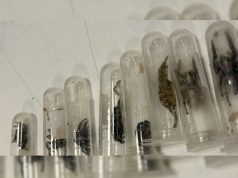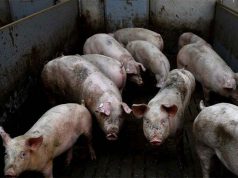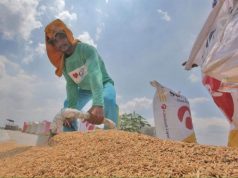
Ten flight attendants were recently in hot water after the Bureau of Customs (BOC) seized 40 kilograms of onions and fruits from their luggage.
BOC spokesman Arnold dela Torre Jr. said the agency is studying the criminal charges that could be filed against the flight crew of the Philippine Airlines.
RELATED: BOC eyes charges vs 10 flight attendants over onions
Dela Torre in a radio interview said that in the past few months, many people were also caught bringing home onions from abroad.
This can also be observed in social media, especially on TikTok and Facebook.
Instead of the typical pasalubong such as chocolates, Filipinos are bringing home onions because it is relatively cheaper abroad.
This was also reported by Arab News, an English-language daily newspaper published in Saudi Arabia.
Based on the latest price monitoring of the Department of Agriculture, a kilo of local red onion ranges from ₱320 to ₱450.
The highest recorded price of onions was last December when it soared up to P720 per kilo.
RELATED: ‘Priced higher than meat, minimum wage’: Philippine onion crisis lands TIME feature
Some Filipinos have also justified that bringing home onions from overseas is fine because it is for personal consumption.
What law says about bringing onions from abroad
BOC NAIA said that bringing home produce including onion in the Philippines regardless of quantity is regulated.
Under Presidential Decree 1433, Plant Quarantine Officers are mandated “to inspect all carriers, crew/passenger luggage and incoming mails, in order to determine the presence of plants, plant products, and other materials capable of harboring plant pests, as well as, potential animal pests.”
Apart from this, plant products are classified as “regulated importations” under the Customs Modernization and Tariff Act.
This means a person who intends to bring home vegetables must secure a clearance.
If the commodity is for personal use, the traveler must have a Plant Quarantine Clearance, meanwhile, a Sanitary and Phytosanitary Import Clearance is needed if it is intended for commercial use.
These permits can be secured from the Bureau of Plant Industry (BPI).
How to get a permit
For Plant Quarantine Clearance, a person must follow the procedure below:
- The importer must submit a letter of application for their specific category 1 commodity.
- The application will be evaluated, if the commodity does fall under category 1, the registration team will endorse a PQSC to the BPI Director for approval.
- Upon approval by the BPI Director, the registration team will release the PQSC to the importer.
Meanwhile, for Sanitary and Phytosanitary Import Clearance the applicant must be a registered importer of BPI and shall file an application through DA’s intercommerce website.
READ: ‘Sisig without onions?’: Pinoys scratch heads as their meal orders become onion-less









